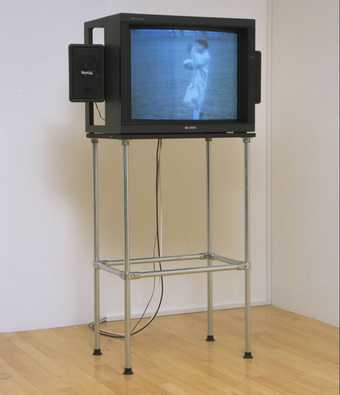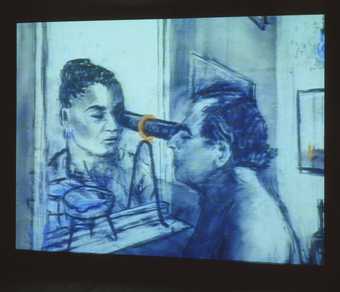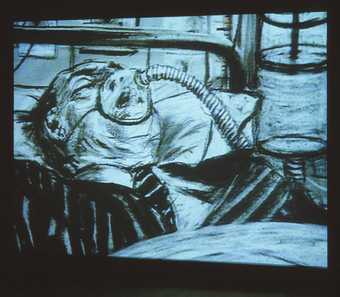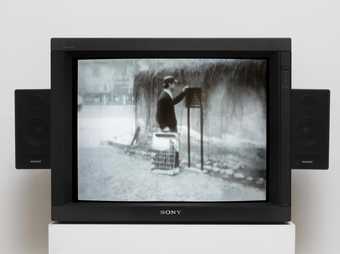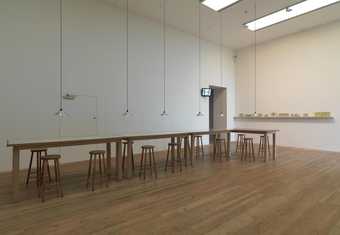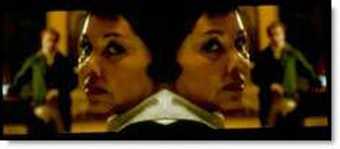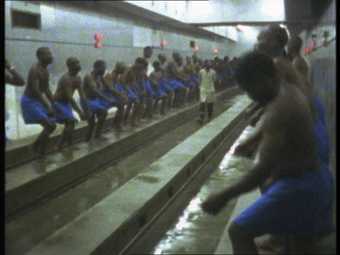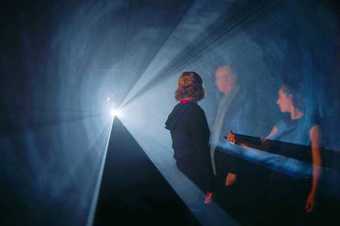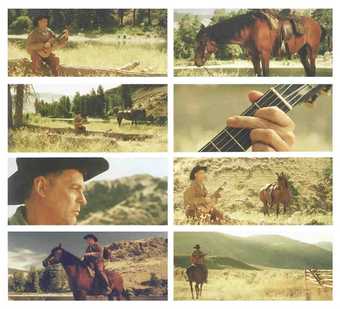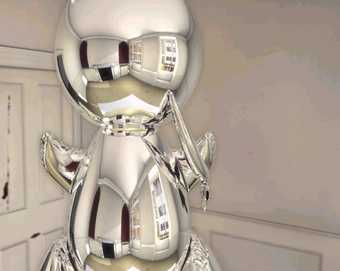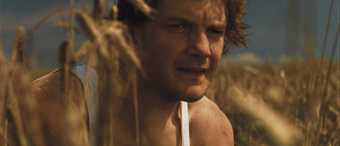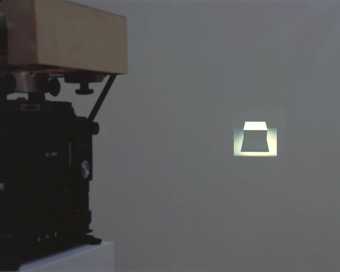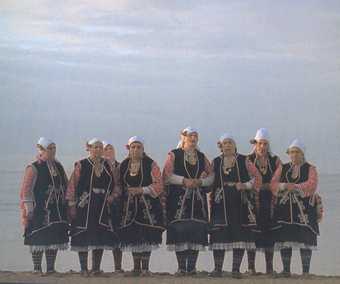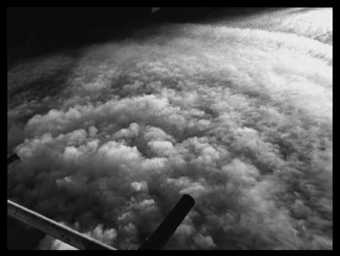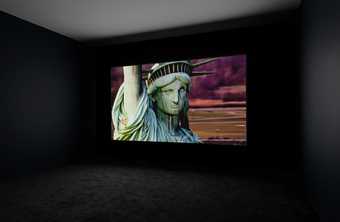
Not on display
- Artist
- Sir Steve McQueen born 1969
- Medium
- Film, 16 mm, shown as video, projection, black and white
- Dimensions
- Duration: 9 min., 2 sec.
- Collection
- Tate
- Acquisition
- Presented by the Patrons of New Art (Special Purchase Fund) through the Tate Gallery Foundation 1996
- Reference
- T07073
Summary
Presented by the Patrons of New Art (Special Purchase Fund) through the Tate Gallery Foundation 1996
T07073
Bear (10 minutes, 35 seconds) was Steve McQueen's first major film. Although not an overtly political work, for many viewers it raises sensitive issues about race, homoeroticism and violence. It depicts two naked men-one of whom is the artist-tussling and teasing one another in an encounter which shifts between tenderness and aggression. The film is silent but a series of stares, glances and winks between the protagonists creates an optical language of flirtation and threat.
In defiance of cinematic convention, the film opens with a close-up shot of one man's shoulder. The camera then moves slowly upwards and to the right, traversing his face with a proximity that suggests it is almost feeling its way across the contours of his skin. After less than a minute, the slow rhythm of this opening shot is interrupted by a dynamic scene of sparring between the two men. Throughout the film, the disorientating camerawork and silent movement of the two bodies moving across a shaft of light, adds to the existing sense of ambiguity. Light sometimes dances off the reflective sweat on their skin, sometimes throws them into shadow and sometimes momentarily blinds the viewer when its full glare is uninterrupted. At certain moments, close-up shots from underneath the men's two interlocked bodies tend towards abstraction with swinging genitalia the only markers for orientation amid a confusion of limbs. Near the end of the film, a back-edited sequence of feet circling around the camera, taunting and dodging each another, recalls the fragmented movement of Eadweard Muybridge's nineteenth century locomotion photographs. This scene can be particularly related to the interest in early cinema which has informed much of McQueen's work.
Like all McQueen's early films, Bear is black and white. It was shot on 16mm film but has been transferred to video and is installed floor to ceiling across one wall in a black room. The floor of this room is highly polished so that a reflection of the image falls across it and the viewer is unable to stand outside its presence. McQueen's strategy of displaying the work in an enclosed space and on a scale above human proportions has important implications: 'You are very much involved in what's going on. You are a participant not a passive viewer,' he has explained (Bickers, p.2). In addition, the silence of Bear is intended to be disconcerting: 'The whole idea of making it a silent piece is so that when people walk into the space they become very much aware of themselves, of their own breathing,' McQueen has commented. 'I want to put people into a situation where they're sensitive to themselves watching the piece' (Bickers, p.2).
Further Reading:
Okwui Enwezor, Michael Newman, Robert Storr, Steve McQueen, exhibition catalogue, Institute of Contemporary Arts, London 1999, reproduced p.13
Jon Thompson, Steve McQueen, exhibition catalogue, Portikus, Frankfurt 1997, reproduced pp.12-13 and front cover
Patricia Bickers, 'Let's Get Physical' (interview with Steve McQueen), Art Monthly, no.202, December 1996-January 1997, pp.1-5, reproduced p.1 and front cover
Sophie Howarth
January 2001
Does this text contain inaccurate information or language that you feel we should improve or change? We would like to hear from you.
Explore
- emotions, concepts and ideas(16,416)
-
- universal concepts(6,387)
-
- violence(331)
- actions: expressive(2,622)
-
- fighting(137)
- man(10,453)
- black(796)
- social comment(6,584)
-
- race(381)
You might like
-
Lucy Gunning The Horse Impressionists
1994 -
William Kentridge Felix in Exile
1994 -
William Kentridge History of the Main Complaint
1996 -
Paul Neagu Neagu’s Boxes
1969 -
Francis Alÿs The Last Clown
1995–2000 -
Sir Isaac Julien CBE RA Vagabondia
2000 -
Sir Steve McQueen Caribs’ Leap/Western Deep
2002 -
Anthony McCall Line Describing a Cone
1973 -
Rodney Graham How I Became a Ramblin’ Man
1999 -
Mark Leckey Made in ‘Eaven
2004 -
Jesper Just Bliss and Heaven
2004 -
Bethan Huws Singing for the Sea
1993 -
Graham Gussin Spill
1999 -
Sir Steve McQueen Static
2009

